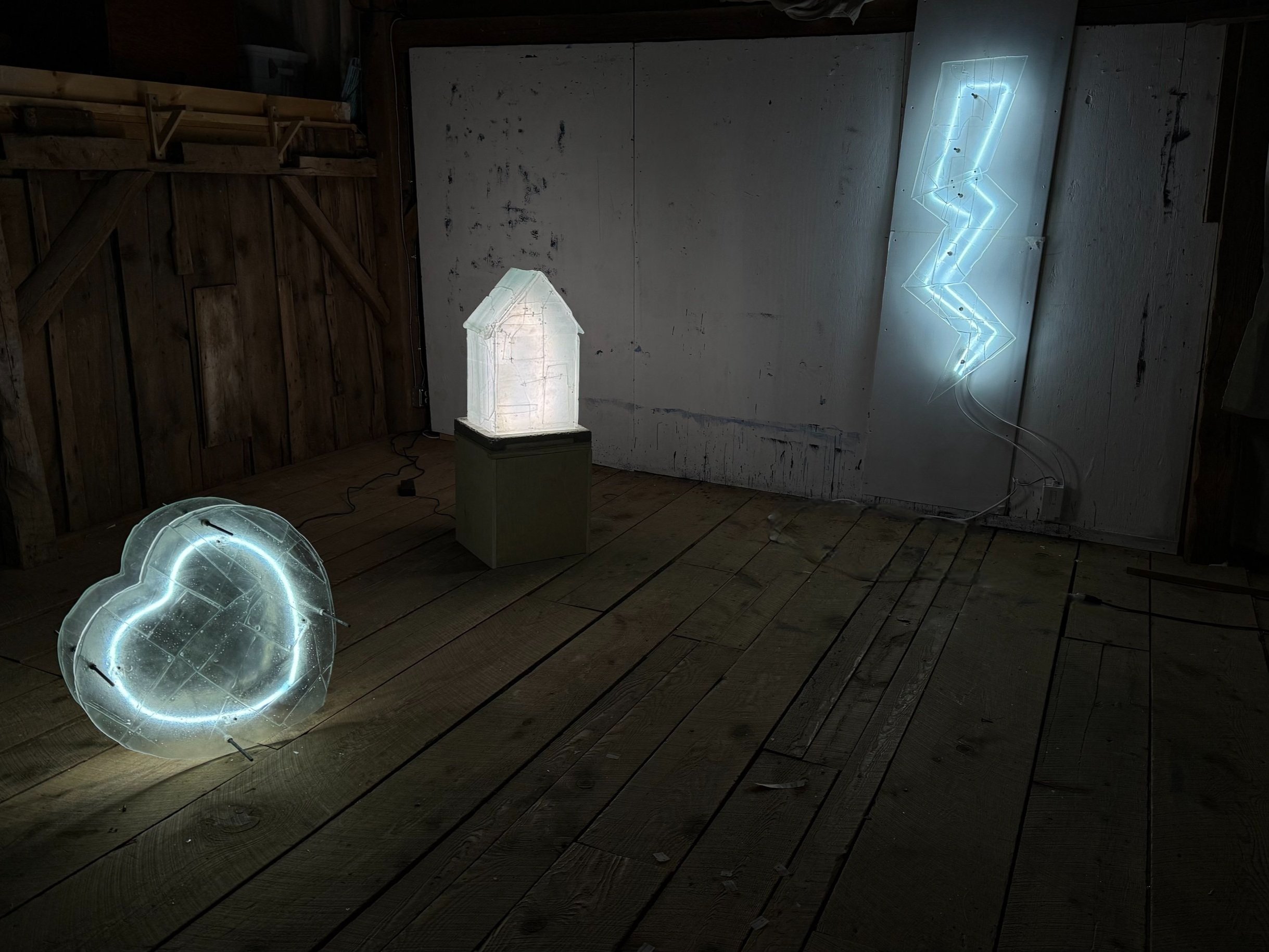

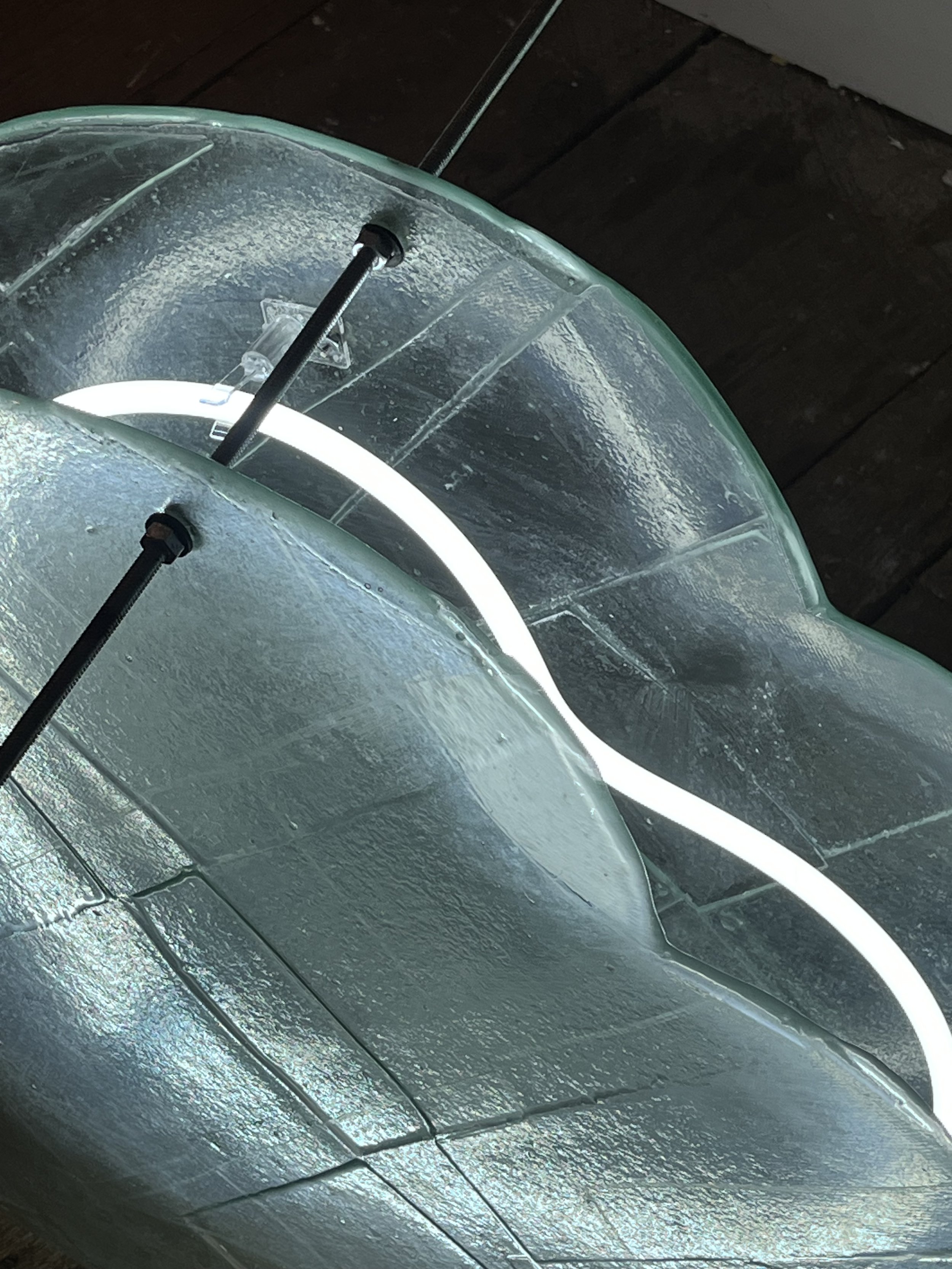
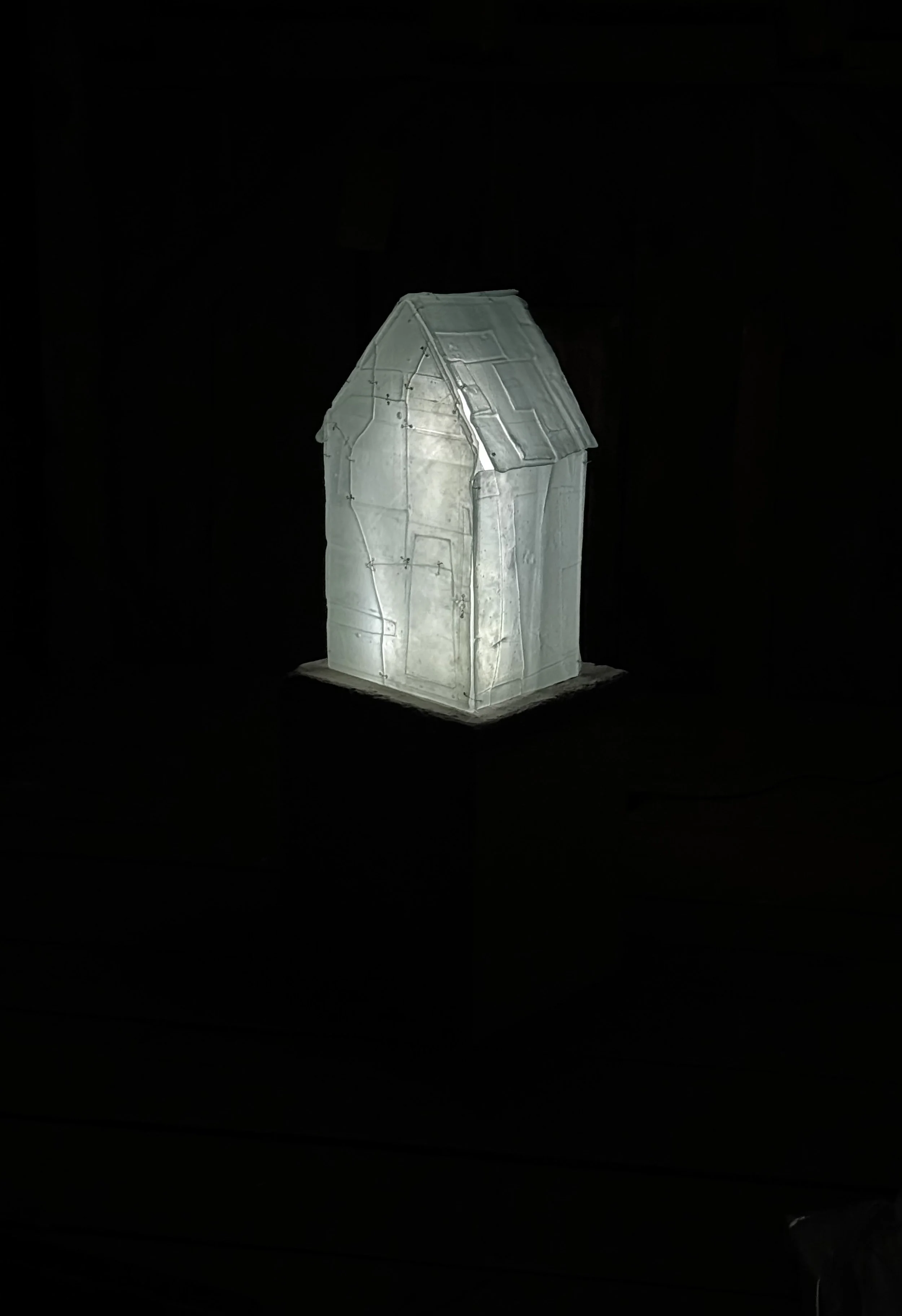


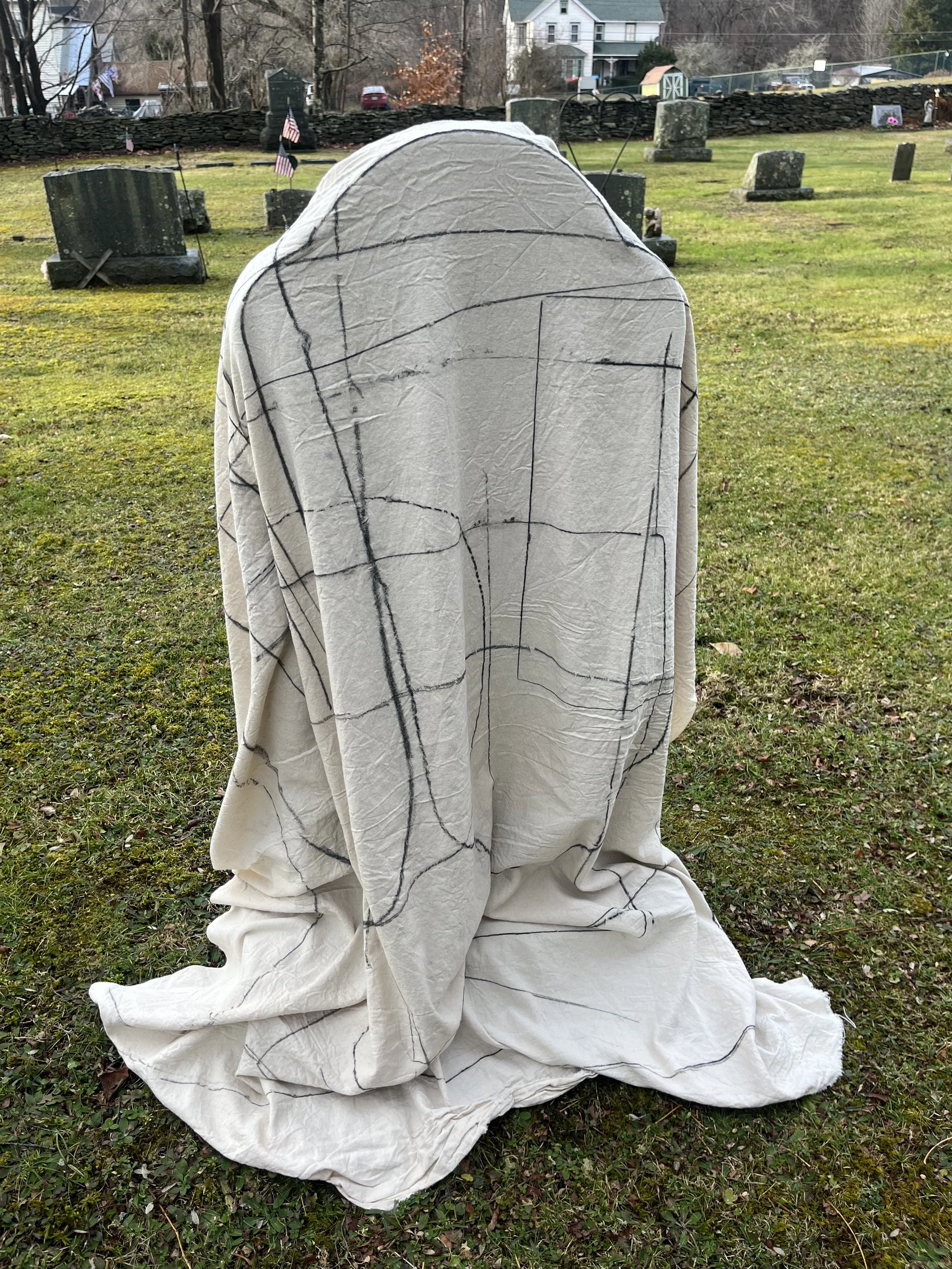
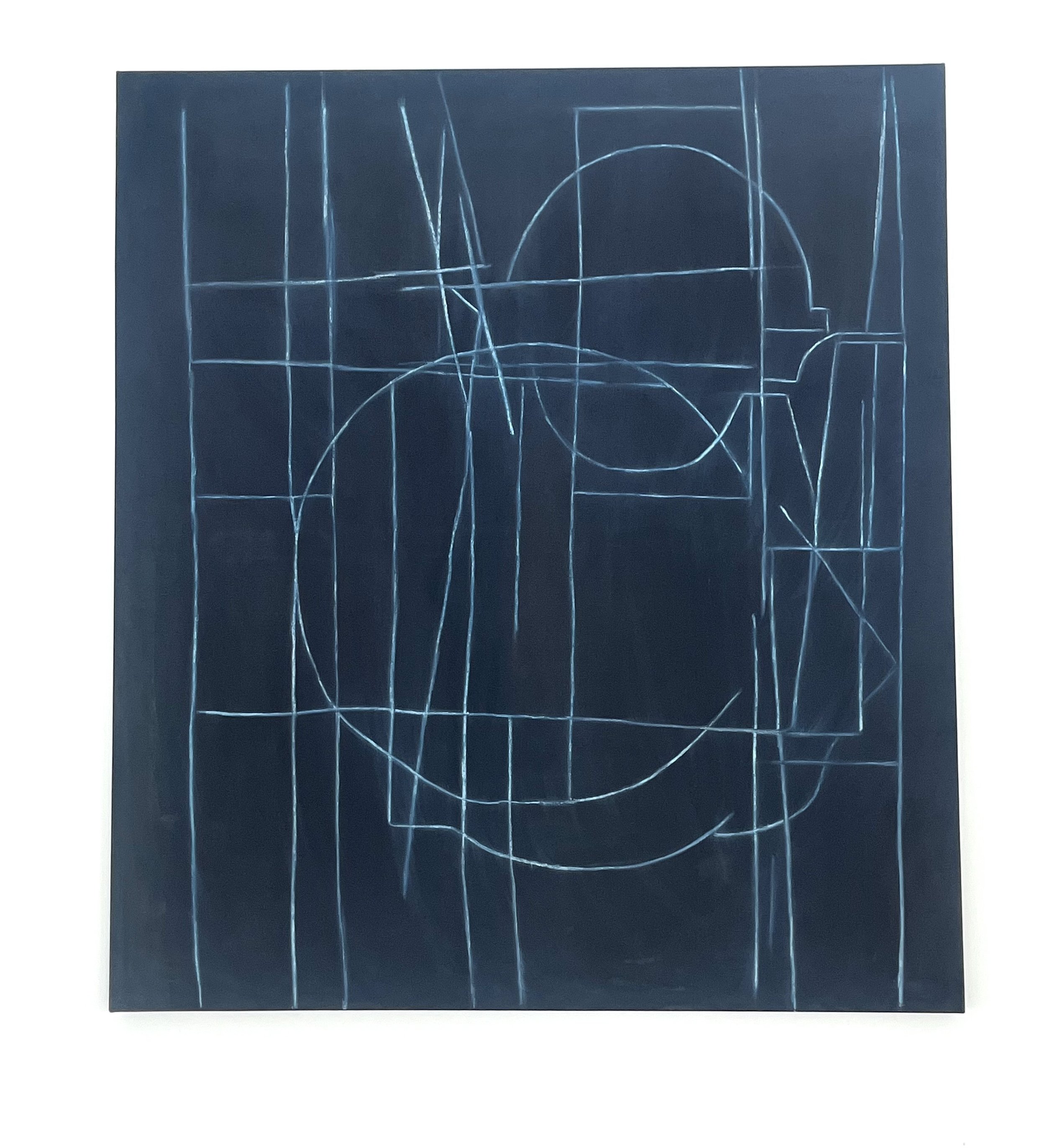
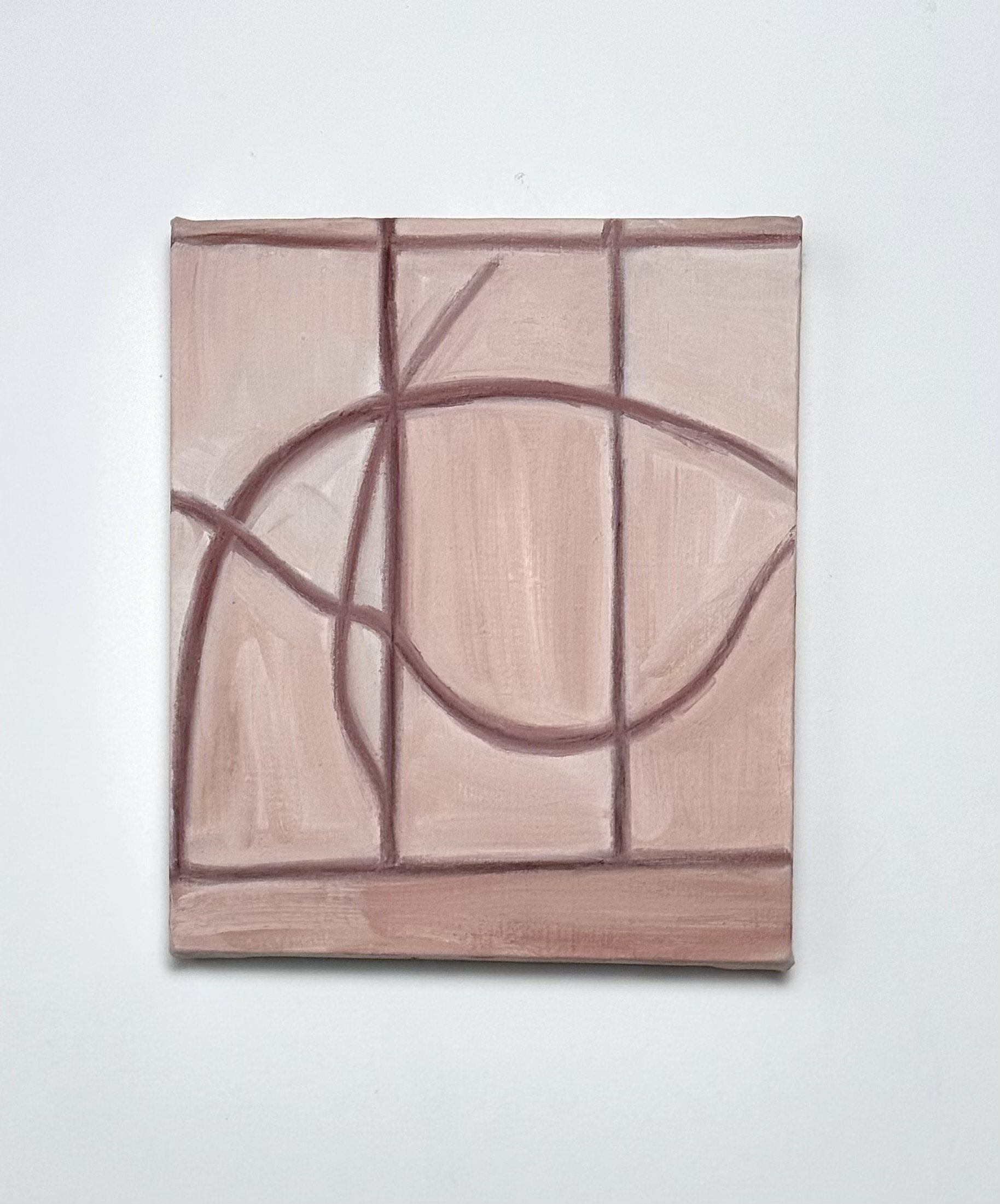
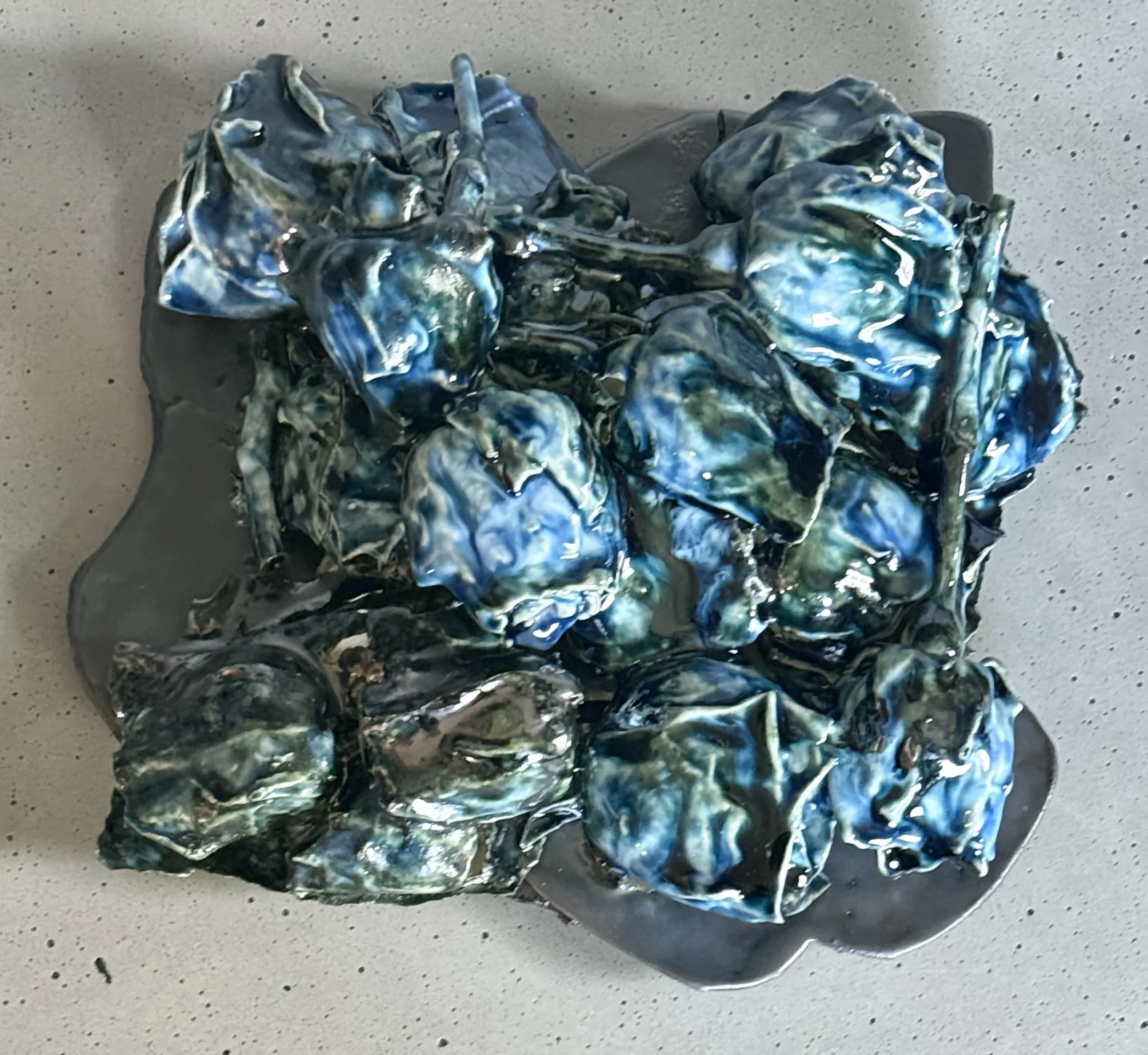
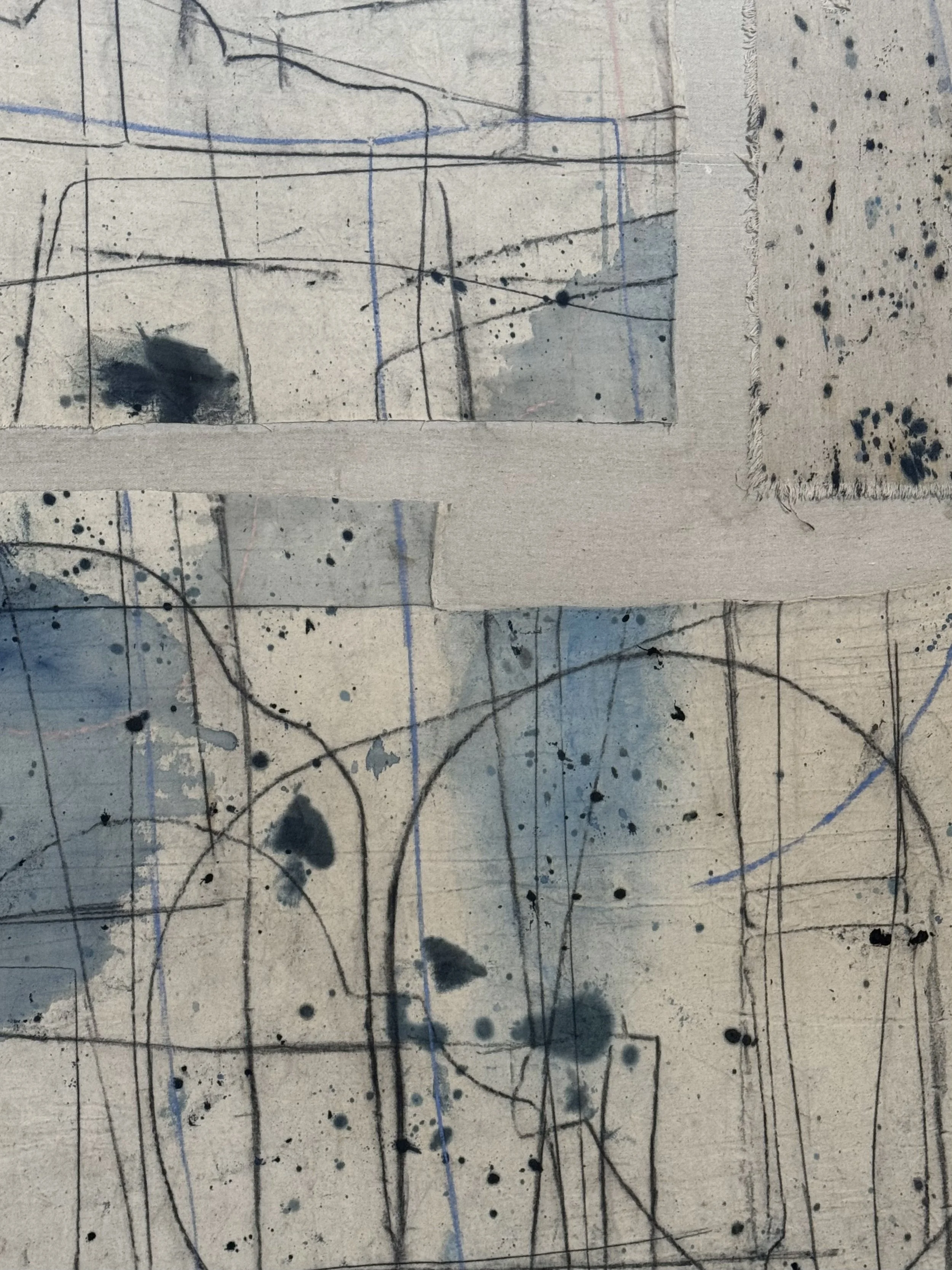
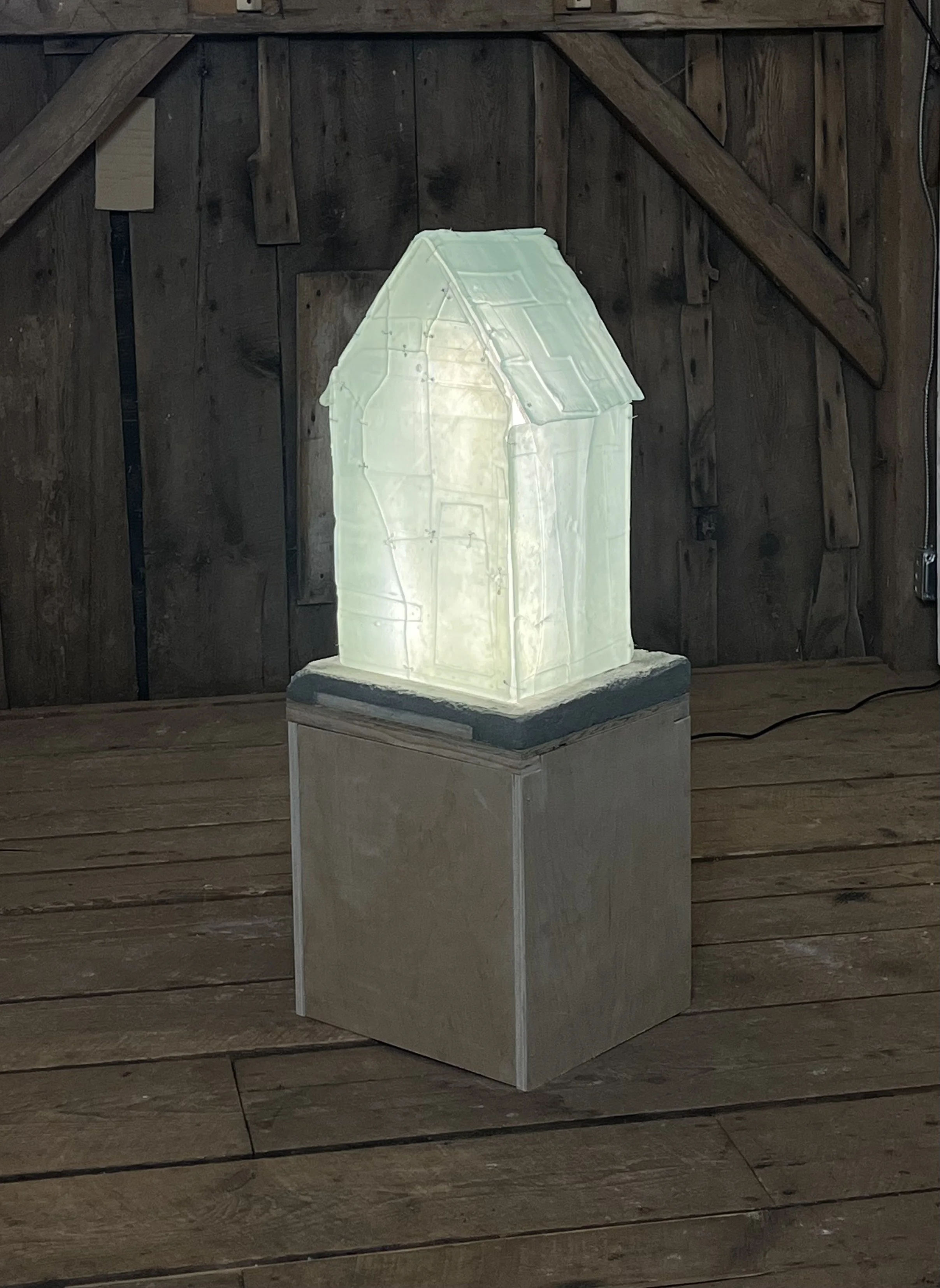
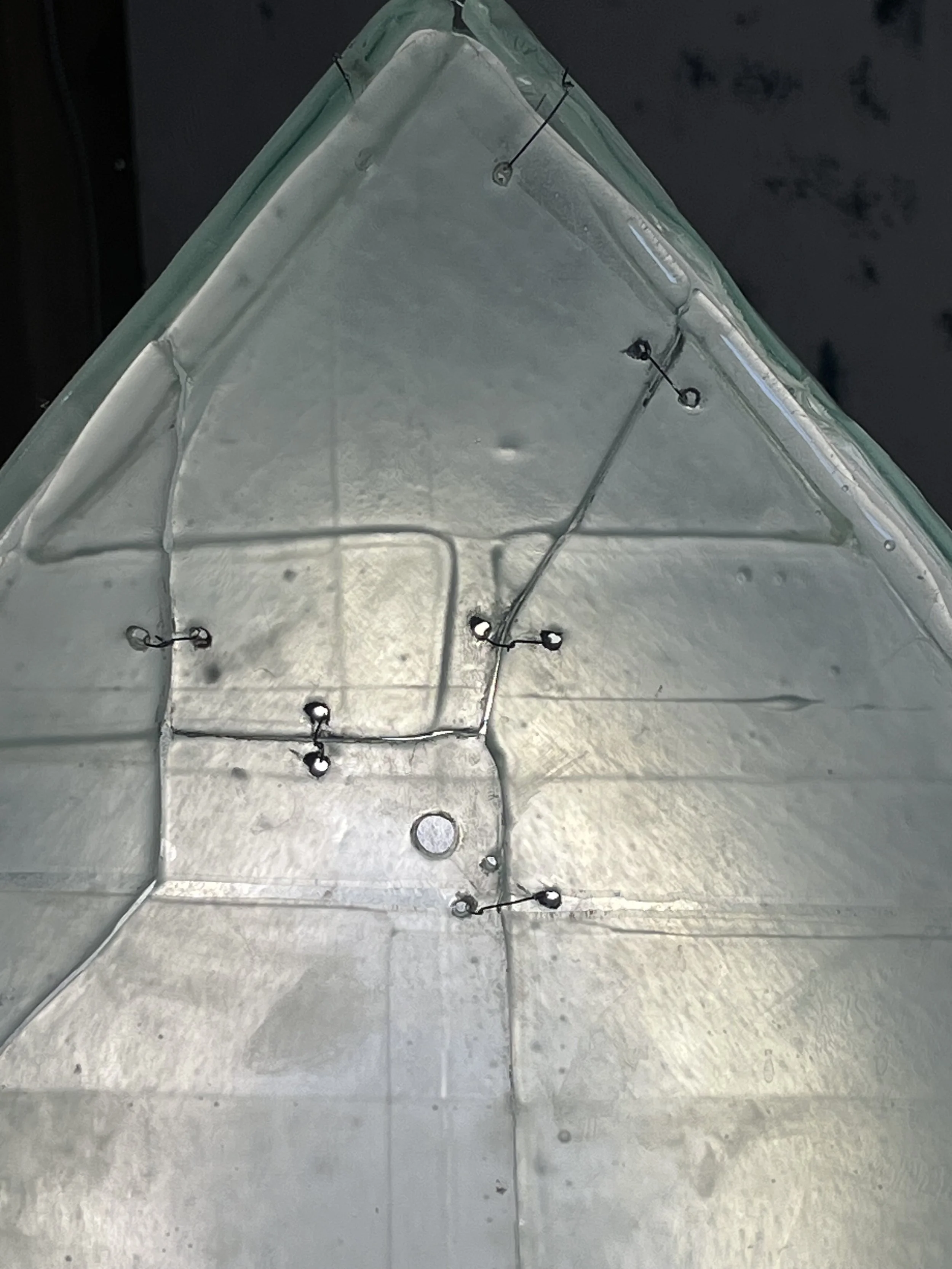
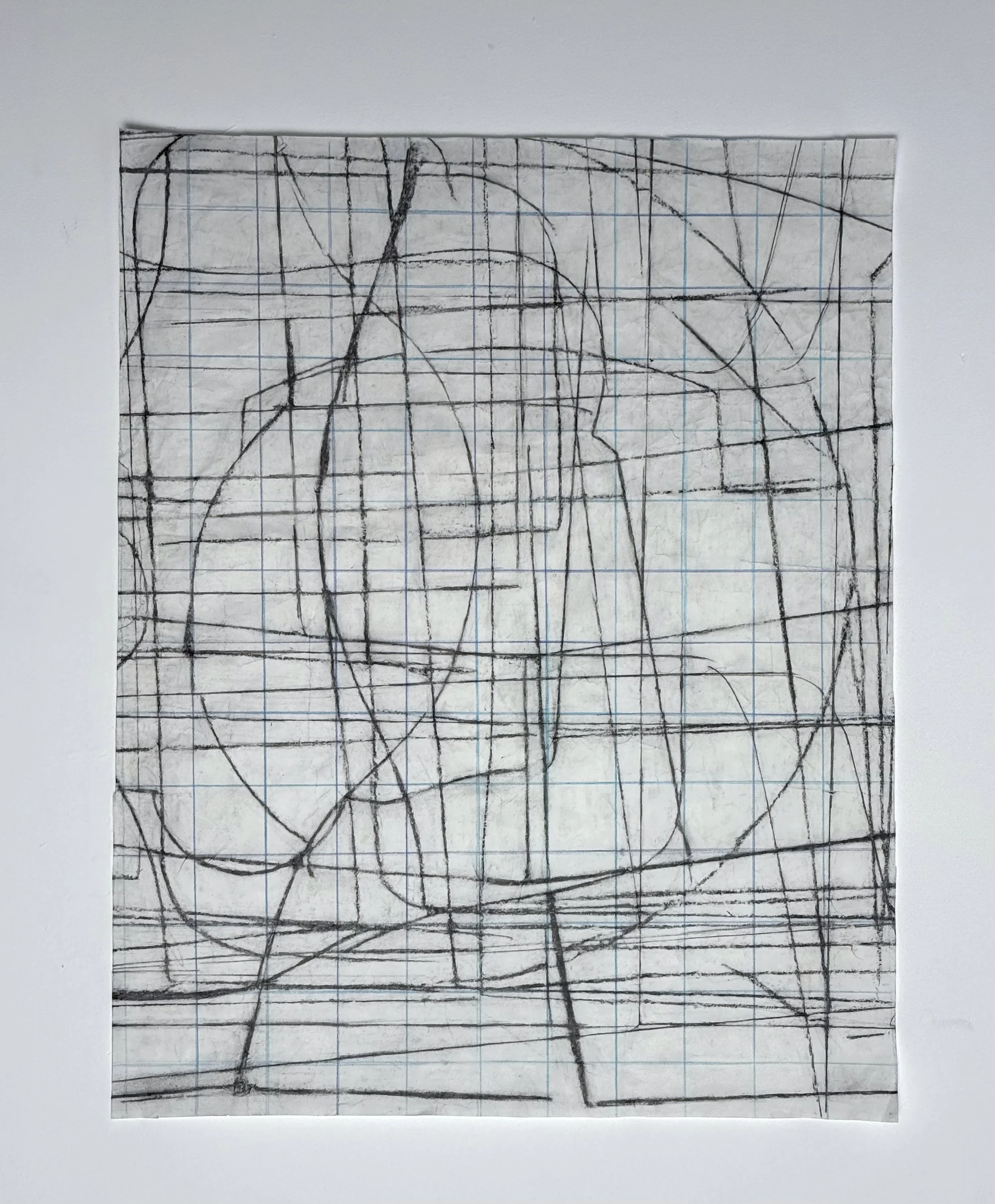
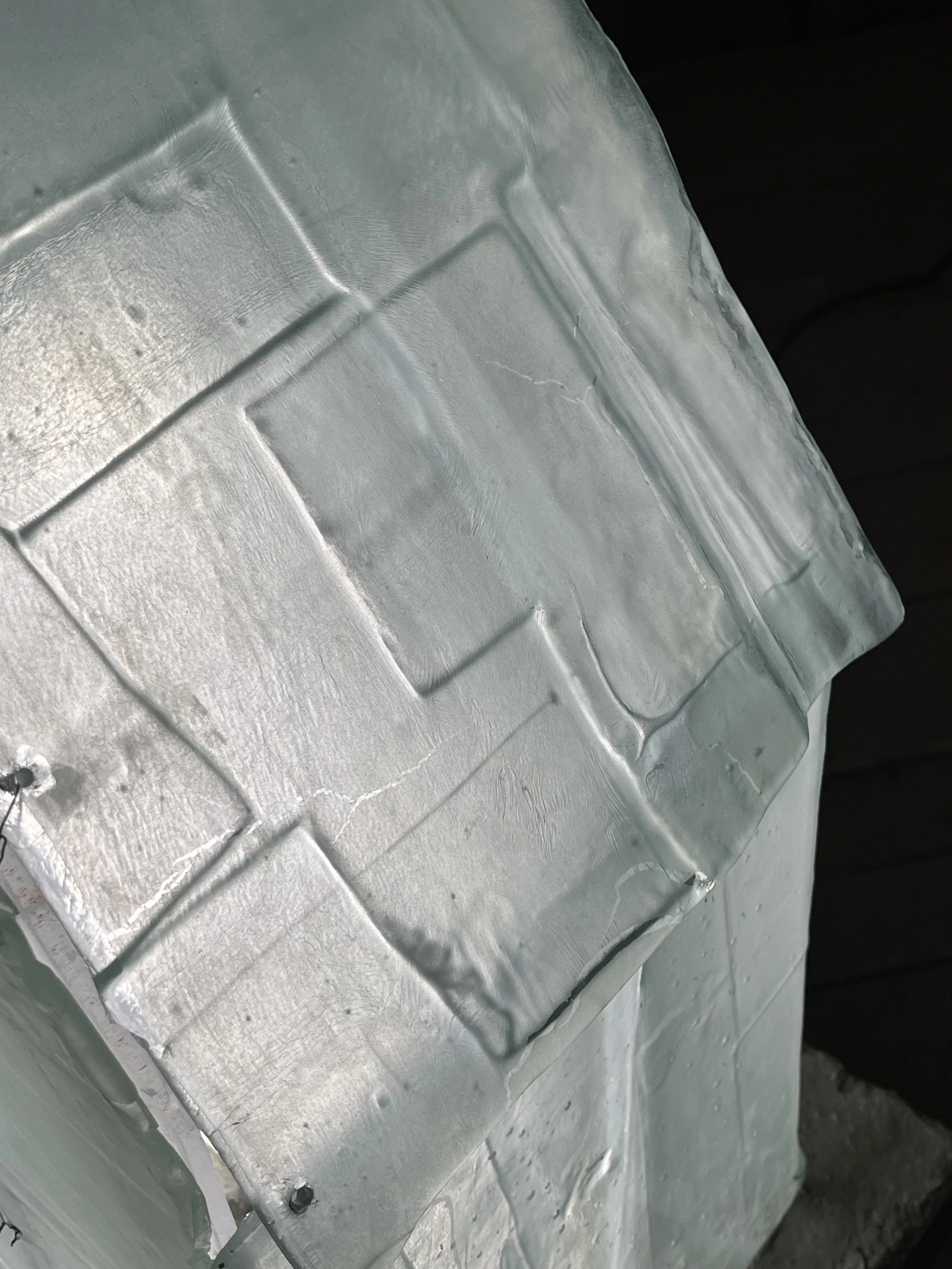
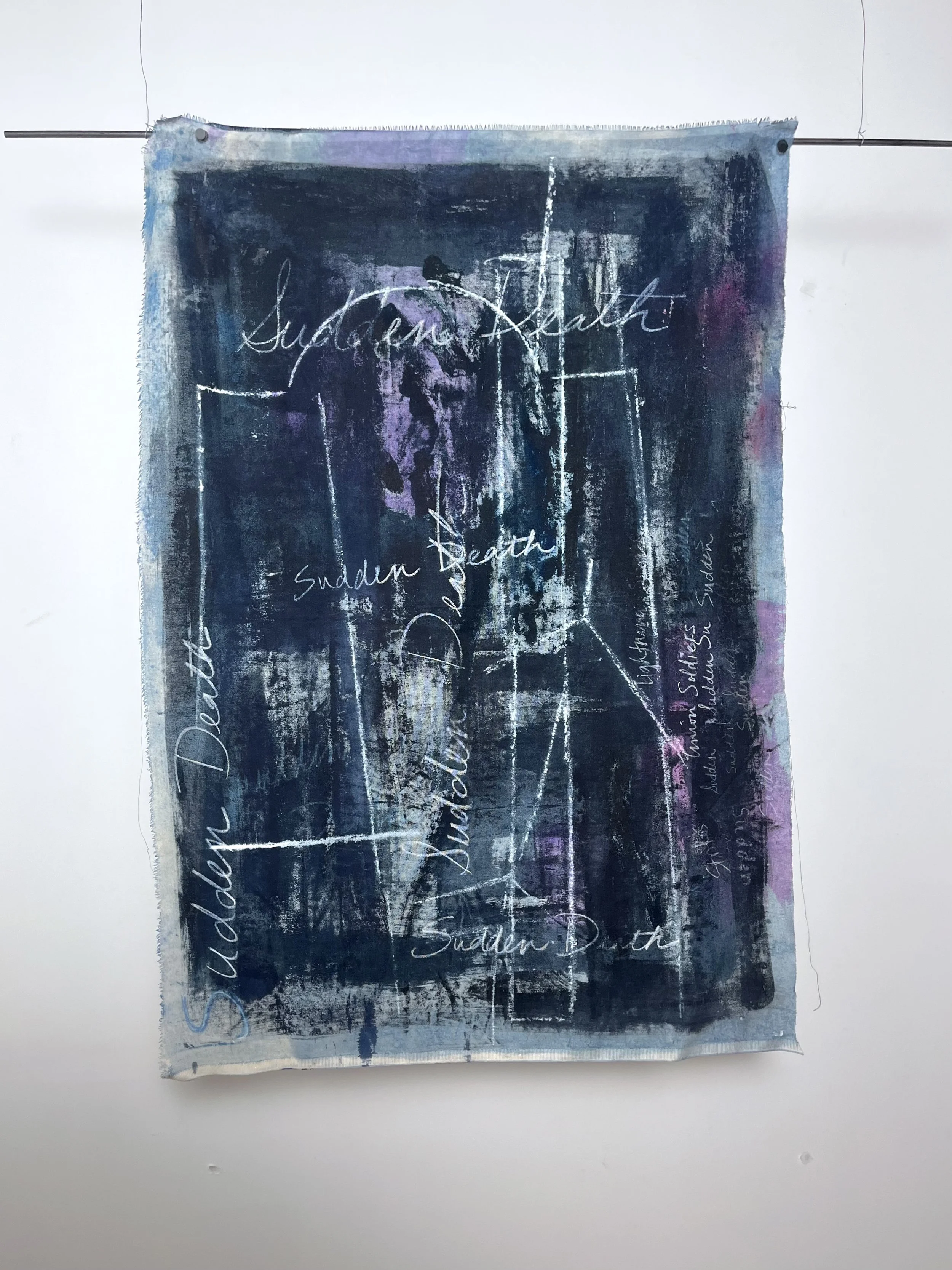


My recent cemetery-based work includes paintings, works on paper and glass sculptures. The abstracted lines in the work are rubbings of the exteriors of grave stones, rather than the text that identifies the deceased.
To make the paintings, sized canvas is draped over graves and the edges of the fabric-draped stones are rubbed with oil pastel. Back in the studio, a layer of paint is applied and wiped off, revealing the image which appears a bit like developing a film photograph. The headstones chosen range from the poignant to the intriguing to the everyday. Human connections, either by manner of death, employment, place of residence or place of burial are explored. One painting records the outlines of the headstones of local farmers who died in the 18th Century and another outlines the graves of food service workers. The titles of the paintings reveal their story. Some titles are Neighbors on the Same Road, Area Murders Woven Together, Sudden Death and Trainwrecks. Once I have found and recorded the outlines of several graves in a category their overlapping outlines create an abstract image that I then transfer to glass through kiln-formed texture shifts.
The texture of the glass heart is derived from graves of people who were voted “Best Looking” in old high school yearbooks at the local historical society. The work references the now ubiquitous heart-shaped graves, the popularity of the former high school students and our present use of hearts to denote popular appeal on social media- in particular the importance of collecting hearts on Instagram for artists. The house-shaped sculpture is similarly derived from peoples’ graves who once lived on the same road 50 years ago, as determined by Census records. The lightning bolt records the tombs of people killed by lightning.The shapes of the sculptures explore our use of emojis as a language that conveys an array of expression from banal to profound.